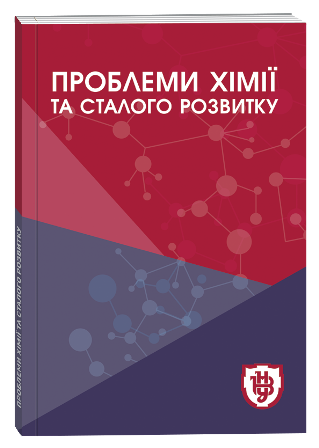ORGANIC ACIDS OF RHUS TYPHINA L. PLANT RAW MATERIAL
DOI:
https://doi.org/10.32782/pcsd-2025-2-9Keywords:
organic acids, ascorbic acid, Rhus typhina L., staghorn sumac, ultrasound irradiation, biologically active compoundsAbstract
The article presents the results of a study on the content of biologically active substances, organic acids, and ascorbic acid in the fruits and leaves of Rhus typhina L. It has been shown that this plant species is highly adaptable to temperate climate conditions, has ornamental value, and provides stable yields, which makes it a promising candidate for cultivation and raw material harvesting. The study analyzed the quantitative content of total organic acids and ascorbic acid in different parts of the plant depending on extraction duration and extraction conditions. It was established that the content of the studied compounds is higher in the fruits compared to the leaves of Rhus typhina L. It was demonstrated that increasing the extraction time promotes a higher yield of organic acids in extracts obtained from fresh leaves but is not effective for the extraction of ascorbic acid due to its oxidative degradation upon exposure to air. In the case of fruit extracts, prolonged extraction does not significantly increase the content of biologically active compounds, as the majority of them are released within the first hour. The effectiveness of ultrasound irradiation as a physical method for intensifying the extraction of biologically active compounds from leaves was confirmed. This approach significantly increases the yield of both total organic acids and ascorbic acid in the extracts. In contrast, ultrasound irradiation showed no significant advantage over conventional extraction when applied to fruits. The obtained results confirm the relevance of further studies on Rhus typhina as a promising source of phytogenic raw material with pronounced bioactive potential. The low toxicity, high agronomic performance, and rich chemical composition of this plant make it attractive for pharmaceutical, food, and cosmetic industries.
References
Дашутіна А.А., Харчено Ю.В. Сировина сумаха оленерогого як джерело органічних кислот. Актуальні проблеми дослідження довкілля : матеріали ХІ Міжнародної наукової конференції, м. Суми, 22–23 травня 2025 р. Суми, 2025. С. 115–117.
Олексійченко Н. О., Китаєв О. І., Борщевський М. О. Сумах оленерогий (rhus typhina L.) в умовах м. Києва : монографія / Н.О. Олексійченко, О. І. Китаєв, М. О. Борщевський. Корсунь-Шевченківський, 2014. 151 с.
Смаглюк А., Кобернік А. Ідентифікація біологічно активних речовин в екстрактах плодів citrullus colocynthis. Актуальні проблеми транспортної медицини: навколишнє середовище; професійне здоров’я; патологія. 2017. 4(50). С. 114–119.
Alsamri, H., Athamneh, K., Pintus, G., Eid, A. H., Iratni, R. Pharmacological and Antioxidant Activities of Rhus coriaria L. (Sumac). Antioxidants. 2021. 10(1). 73. https://doi.org/10.3390/antiox10010073
Fereidoonfar H., Salehi-Arjmand H., Khadivi A., Akramian M., Safdari L. Chemical variation and antioxidant capacity of sumac (Rhus coriaria L.). Industrial Crops and Products. 2019. 139. 111518. https://doi.org/10.1016/ j.indcrop.2019.111518.
Haval A., Fikret K., Dursun Ö., Sinan S. Element and Water-Soluble Vitamins Profile of Rhus coriaria L. (Sumac) Grown in Different Regions. Biological Trace Element Research. 2023. 202. https://doi.org/10.1007/s12011-023-03890-y.
Jamous R. M., Abu-Zaitoun S. Y., Akkawi R. J., Ali-Shtayeh M. S. Antiobesity and Antioxidant Potentials of Selected Palestinian Medicinal Plants. Evid. Based Complement. Altern. Med.: eCAM. 2018. 8426752. https://doi.org/10.1155/2018/8426752.
Kossah R., Nsabimana C., Jianxin Z., Haiqin C., Fengwei T., Hao Z., Wei C. Comparative Study on the Chemical Composition of Syrian Sumac (Rhus coriaria L.) and Chinese Sumac (Rhus Typhina L.) Fruits. Pak. J. Nutr. 2009. 8. Р. 1570–1574.
Kossah R., Zhang H., Chen W. Antimicrobial and antioxidant activities of Chinese sumac (Rhus typhina L.) fruit extract. Food Control. 2011. 22(1). Р. 128–132. https://doi.org/10.1016/j.foodcont.2010.06.002
Liu T., Li Z., Li R., Cui Y., Zhao Y., Yu Z. Composition analysis and antioxidant activities of the Rhus typhina L. stem. J. Pharm. Anal. 2019. 9(5). C. 332–338. doi: 10.1016/j.jpha.2019.01.002
Mirian M., Behrooeian M., Ghanadian M., Dana N., Sadeghi-Aliabadi H. Cytotoxicity and antiangiogenic effects of Rhus coriaria, Pistacia vera and Pistacia khinjuk oleoresin methanol extracts. Res. Pharm. Sci. 2015. 10(3). Р. 233–240.
Najjar F., Rizk F., Carnac G., Nassar R., Jabak S., Sobolev A.P., Bou Saada Y., El Sabban M., Hamade A. Protective Effect of Rhus coriaria Fruit Extracts against Hydrogen Peroxide-Induced Oxidative Stress in Muscle Progenitors and Zebrafish Embryos. Peer J. 2017. 5. e4144.
Nozza E., Melzi G., Marabini L., Marinovich M., Piazza S., Khalilpour S., Dell’Agli M., Sangiovanni E. Rhus coriaria L. Fruit Extract Prevents UV-A-Induced Genotoxicity and Oxidative Injury in Human Microvascular Endothelial Cells. Antioxidants. 2020. 9. Р. 292.
Olchowik E., Sciepuk A., Mavlyanov S., Abdullajanova N., Zamaraeva M. Antioxidant properties of Rhus coriaria L. extracts. Biomed. Prev. Nutr. 2012. 2(2). Р. 99–105. DOI: 10.1016/j.bionut.2011.06.008
Opiyo S. A., Njoroge P. W., Ndirangu E. G., Kuria K. M. A Review of Biological Activities and Phytochemistry of Rhus Species. Am. J. Chem. 2021. 11(2). Р. 28–36. DOI: 10.5923/j.chemistry.20211102.02
Ozcan M. Effect of Sumach (Rhus coriaria L.) Extracts on the Oxidative Stability of Peanut Oil. J. Med. Food. 2003. 6. Р. 63–66.
Qiu D. R., Wang D. C., Yang S. X., Zhang Y. M., Zhang M. Z., Sun J. Z., Cong J., Guo J., He S. L., Qin J. C., Wei D. S. Phenolic profiling and antioxidant potential of Rhus species. Biochem. Syst. Ecol. 2016. Р. 69. Р. 261–265. DOI: 10.1016/j.bse.2016.10.011
Qiu K., He W., Zhang H., Wang J., Qi G., Guo N., Zhang X., Wu S. Bio-Fermented Malic Acid Facilitates the Production of High-Quality Chicken via Enhancing Muscle Antioxidant Capacity of Broilers. Antioxidants. 2022. 11(12). Р. 2309. DOI: 10.3390/antiox11122309
Raut J. S., Karuppayil S. M. A Status Review on the Medicinal Properties of Essential Oils. Ind. Crop. Prod. 2014. 62. Р. 250–264.
Rayne S., Mazza G. Biological Activities of Extracts from Sumac (Rhus spp.): A Review. Plant Foods Hum. Nutr. 2007. 62. Р. 165–175.
Sekowski S., Naziris N., Chountoulesi M., Olchowik-Grabarek E., Czerkas K., Veiko A., Abdulladjanova N., Demetzos C., Zamaraeva M. Interaction of Rhus typhina Tannin with Lipid Nanoparticles: Implication for the Formulation of a Tannin-Liposome Hybrid Biomaterial with Antibacterial Activity. J. Funct. Biomater. 2023. 14. Р. 296. DOI: 10.3390/ jfb14060296
Wang S., Zhu F. Chemical composition and health effects of sumac (Rhus coriaria L.). Food Chem. 2017. 237. Р. 431–443. DOI: 10.1016/j.foodchem.2017.05.111
Wei Z. P., Liu J. J. Rhus typhina, a good tree species for protection forest. Protection Forest Sci. Technol. 2001. 3. Р. 81.
Yuan Y., Guo W., Ding W., Luo Y., Wang R., Du N., Liu J., Xu F. Effect of environmental factors on Rhus typhina. Plant Soil. 2013. 372(1–2). Р. 389–400. DOI: 10.1007/s11104-013-1748-3








